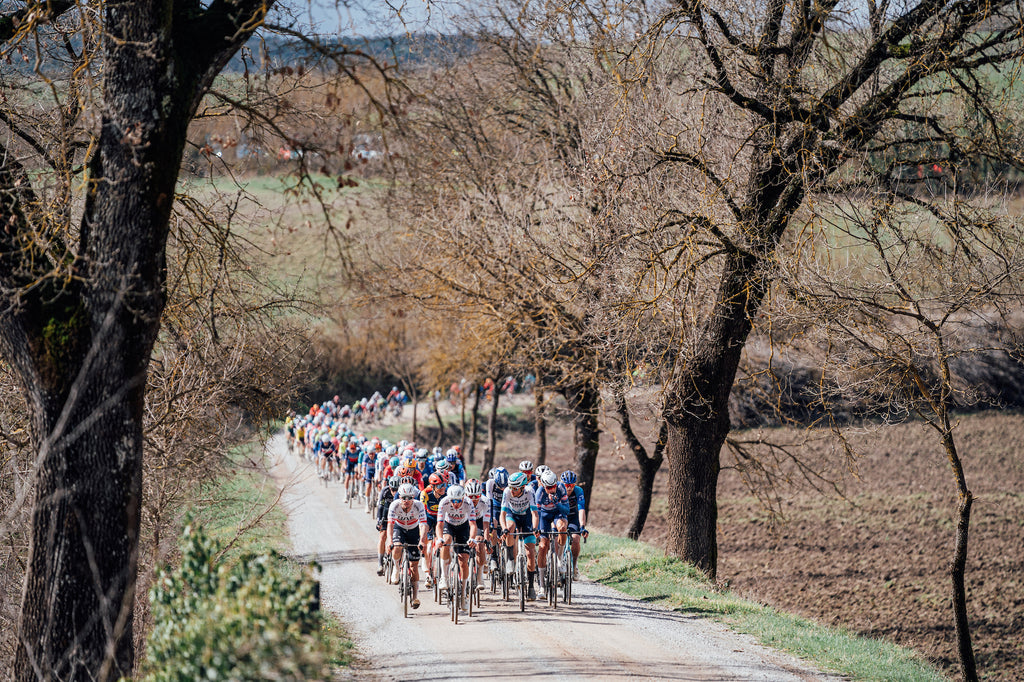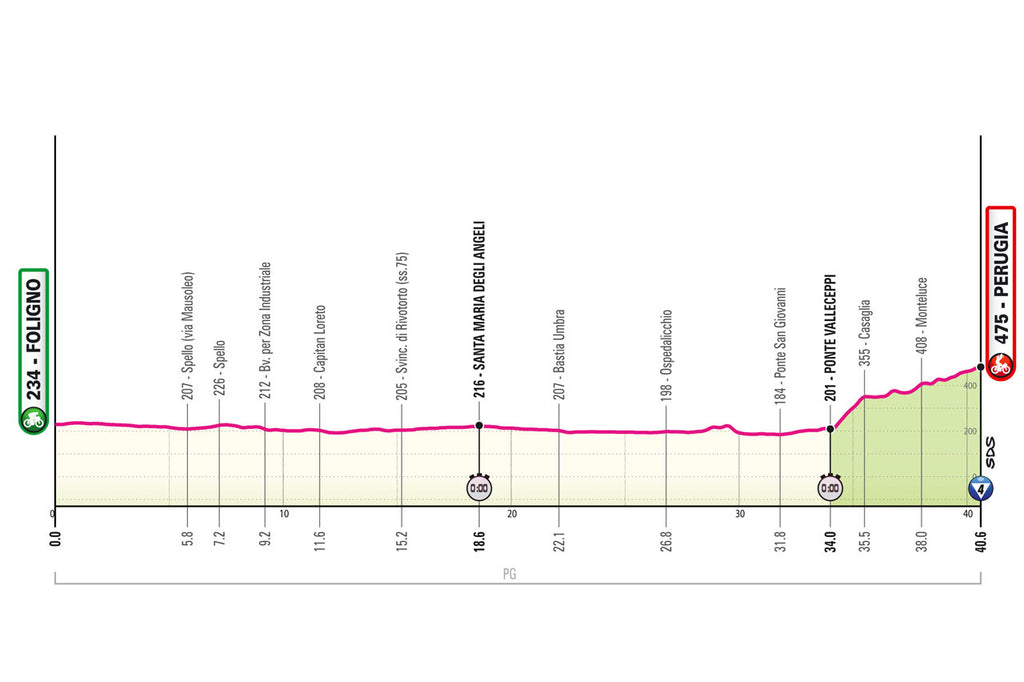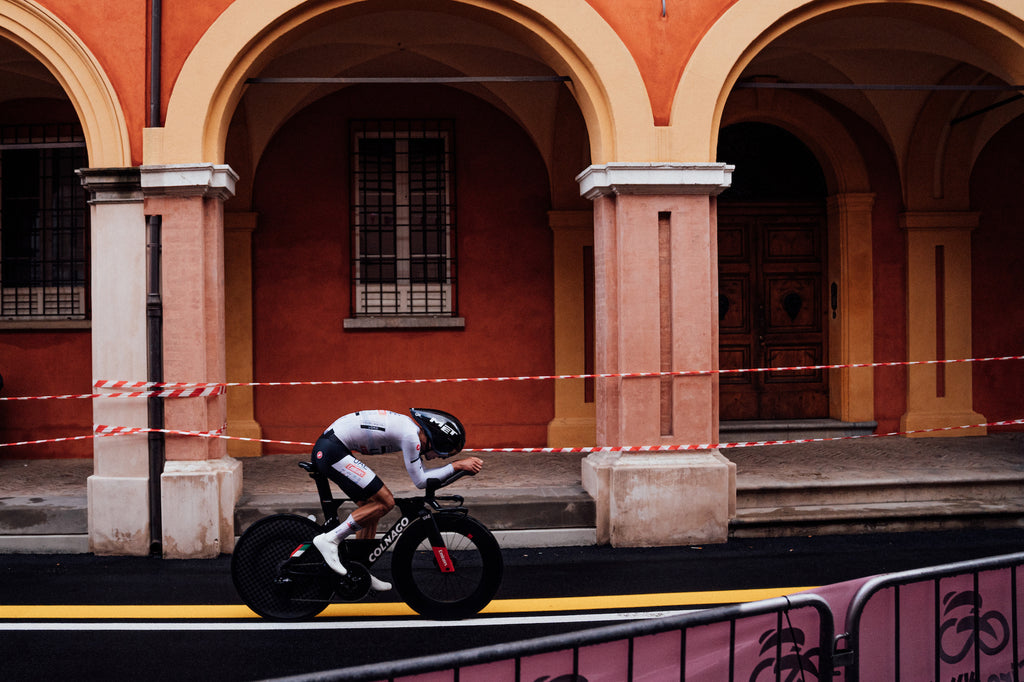Giro d'Italia 2024: the hardest stages
A look at the toughest stages of this year's Corsa Rosa
Think back to last year’s Giro d’Italia and you may remember a general classification battle that felt largely muted until Monte Bondone at the end of week two, before resuming that sense of stasis with the prospect of a third week back loaded with extreme mountain stages and an uphill time trial. On paper it looked like a route that could nicely crescendo and, while we did get a dramatic final stage that the organisers dreamt of, it was preceded by a race that didn’t live long in the memory with a certain caution set in amongst the GC contenders.
The 2024 Giro d’Italia route feels more varied and, while still packs a punch in the finale, it looks like an attempt by the organisers to try and split the race up early on with a mix of stages including summit finishes, a time trial, and even some gravel.
Of course, it isn’t always the hardest stages that make the big differences in the race, and there have been many notable moments on easier days through the years in which a key GC rider has been caught off guard and lost serious time. But for the waiting audience, it’s the gruelling, shark tooth profiles of the high mountain stages that we all mark in our calendars expecting fireworks. As usual, there are plenty of those to enjoy in this year’s Giro, but there’s also several other tough stages that will seriously test the peloton.
Giro d’Italia 2024 - the hardest stages
Stage six: Torre del Lago Puccini (Viareggio) - Rapolano Terme, 180km
With just two category four climbs, a quick glance at the profile of Giro d’Italia stage six will suggest that this should be a fairly straightforward ride for the bunch. But the devil is in the details, and after 70km of flat roads south of Pisa, things begin to get pretty spicy.
First is the almost 10km long category four climb to Volterra, before the riders drop down to the relentless Tuscan hills and gravel roads that define the March one-day Classic, Strade Bianche. There are much fewer kilometres of gravel here than in the one-day race, just 12km over three sectors in the final 50km, but that is more than enough to worry the GC contenders. Not only because of the difficulty in just traversing the sectors, but the increased risk of punctures and mechanicals that could see them left behind in an instant.

Stage seven: Foligno - Perugia, 40.6km (ITT)
If stage six wasn’t enough to leave riders battered and bruised, and for some perhaps rueful of lost time, then they might not feel much better at the sight of a particularly punishing individual time trial the following day on stage seven.

At 40.6km, it’s a long time trial by modern standards, and there could be some enormous time gaps by the end of it. The first 34km is not too technical and is almost entirely flat and the powerful, aero riders will thrive on this section. But a 6.6km category four climb (averaging 3.2%) to the line will provide a real kick in the teeth for anyone who has gassed themselves on the flat section.
That climb, which features a gruelling 1.3km section averaging 11.3% and maxes out at 16%, will be where the true all-rounders can make the most significant gains. A bike change feels unlikely given the shallow sections following the steep bump, so expect to see riders completing the climb on their time trial setups.
Stage eight: Spoleto - Prati di Tivo, 152km
It’s almost certainly not by accident that the three most difficult stages in the first week of the Giro are tied back to back. After the stress of the strade bianche and the all-out effort of a long time trial, there’ll be some fatigue setting in for many riders ahead of the Giro’s hardest mountain stage thus far in the race.
The one saving grace of this stage into the Apennines may be its relatively short length of 152km. Conversely, that could spur riders to attack earlier and split up the race, particularly with the uncategorised uphill start to the stage to Forca di Cerro. There is then hardly a metre of flat road for the rest of the stage. First, at around 20km ridden, the riders will tackle the category two Forca Capistrello (16.3km, 5.3%), before a series of uncategorised ups and downs take them to the category three climb of Croce Abbio (8.1km at 4.7%). A 25km descent then leads to the foot of the final, category one climb of the day, the Prati di Tivo, where the day will ultimately be decided. At 14.6km with an average of 7%, it’s perhaps not the hardest climb of the Giro on paper, but with sections of 12% and a tough day under the belt of the GC contenders, it’s prime territory for attacks.

For the rest of the peloton, the first rest day will be coming into view once they reach the top of the Prati di Tivo, there’s just a small matter of a 214km stage to Napoli to contend with before they get there.
Stage 15: Manerba del Garda - Livigno (Mottolino), 222km
The Giro heads to its first proper high-altitude finish in Livigno on stage 15, a day that could be the hardest of the race overall with around 5,400m of climbing to tackle. There are three category one climbs packed into the last 80km, including the fearsome Passo del Mortirolo, albeit from the marginally easier side from Monno.

While there are two climbs taken on before the passage of the Mortirolo, this could be the key ascent for any long-range moves. It’ll be a bold rider who attacks given the majority of the final 50km is uphill over the Passo di Foscagno (14.6km at 6.5%) and the Passo d’Eira, where riders pass the summit and head up the Mottolino ski slope for a leg-shredding push to the line. For the last 2km, an uneven gradient of over 10% is punctuated by gruelling 19% sections. It’ll be a key moment for GC contenders, with the potential to lose loads of time on this section if the lights go out.
Stage 17: Livigno - Santa Cristina Valgardena/St. Christina in Gröden (Monte Pana), 202km
Stages 16 and stage 17 will arguably be the Giro’s most scenically stunning stages this year. While stage 16 begins in the Italian Alps in Livigno, it will traverse into one of the most beautiful areas of the Dolomites, finishing at the foot of the Sassolungo and Sella groups, an arena that has served up memorable Giro battles through the decades.

Stage 17 begins slightly further up the road and, more agonisingly for the riders, immediately up the category two Passo Sella (5.5km, 6.8%). At 159km in total, the stage is on the short side compared to others in the race, but manages to pack 4,200m within that distance. After that unwelcome introduction, the peloton will then descend past Passo Pordoi towards the first long Dolomiti climb of the day, the Passo Rolle (19.8km, 4.8%). This is where the wearing down process of this stage really begins and, with three more categorised climbs to come, it’s unlikely anyone will make a daring attack in the general classification at this point.

After then passing the category three Passo Gobbera (5.7km, 6.3%) with 59km to go, the peloton will take on the Passo Brocon twice. The first time approaches from the north east, which the organiser has deemed a category two ascent (15.4km, 5.6%), while the second ascent tackles the climb from the more difficult south western side (11.9km, 6.5%), which ramps up to 13% at presents another agonising last drag to the line for the riders. There is very little flat road between the two ascents of the Brocon, so there is certainly a chance of attacks on the first ascent of the climb, particularly given how late in the race this is.
Stage 20: Alpago - Bassano del Grappa, 184km
This is the grand finale of the fight for pink in earnest which will conclude with two ascents of the Monte Grappa. Rising ominously out of the Venetian Plain, Monte Grappa is far from the highest peaks of this Giro but it is a devilishly difficult climb that, at this point in the race, could prove decisive in the overall victory and respective podium spots.
This particular side of the Monte Grappa, starting in Semonzo, is one of the most difficult. At 18.1km long with an average gradient of 8.1%, the ascent does feature gradients of up to 17%, but remains largely at an energy sapping grind of between 8% and 9.5% for much of the climb.

There is little in the way of the riders before they reach the first ascent with 97km to go, meaning it is unlikely that any attacks have come from the key contenders and a breakaway could have a marginal gap. That flat run-in makes the double ascent even more decisive, and there’s a strong chance we’ll see some action the first time up if rivals want to put the race leader under serious pressure.
Once they reach the summit for the second time with 31km to go, aside from a small incline midway down, it’s a long descent to the finish where the ultimate destination of this year’s pink jersey will be known.






























